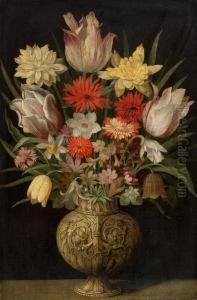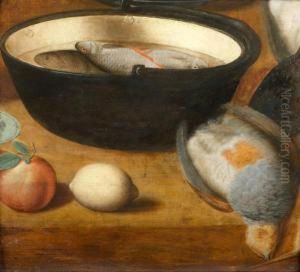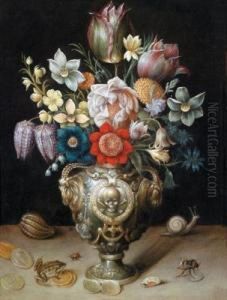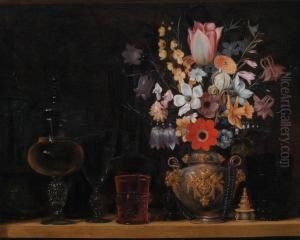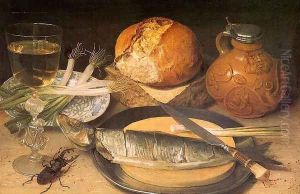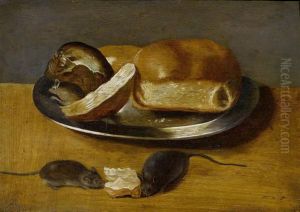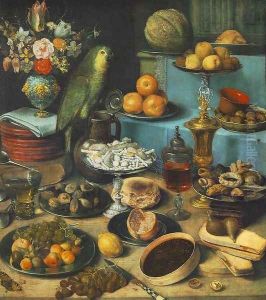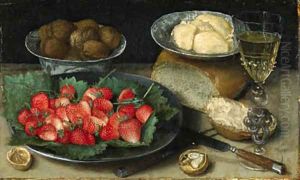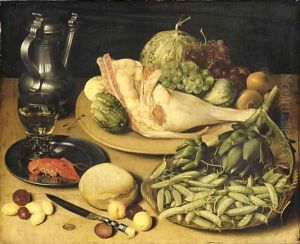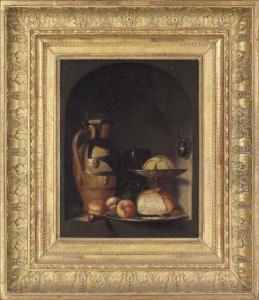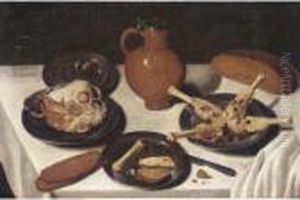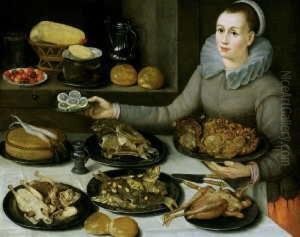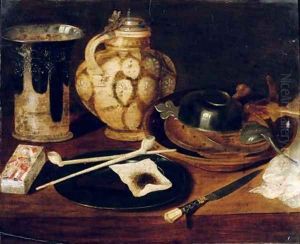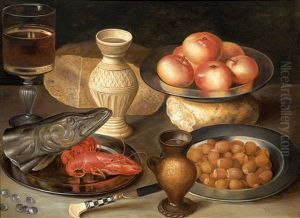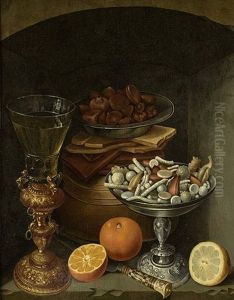Georg Flegel Paintings
Georg Flegel was a German painter known for his detailed still-life compositions during the early seventeenth century. Born in 1566 in Olomouc, in the modern-day Czech Republic, he initially received his artistic training in his hometown. He moved to Vienna and worked under the guidance of the artist Lucas van Valckenborch. In 1592, he settled in Frankfurt am Main, which was then a significant center of trade and commerce, and this move proved to be pivotal for his professional development.
Flegel's work is characterized by its meticulous detail and fine brushwork, reflecting an interest in the natural world and its representation. He specialized in still lifes, a genre that was becoming increasingly popular in Europe at the time. His compositions often included a variety of objects, such as flowers, fruit, insects, and household items, which were rendered with high precision and a keen eye for texture and material quality.
One of Flegel's significant contributions to art was his development of the standalone still-life genre in Germany. Before his time, still-life elements were typically part of larger, more complex compositions. Flegel, however, created works that focused exclusively on the still life, thereby helping to establish it as a respected genre in its own right.
Throughout his career, Flegel also painted banquet still lifes, which were larger compositions that included food and drink, suggesting the abundance and luxury enjoyed by the wealthy classes of the time. These works not only showcased his talent for depicting various textures and surfaces but also served as a commentary on contemporary society and its values.
Georg Flegel died in 1638 in Frankfurt am Main. His legacy includes influencing future generations of still-life painters, and his works are housed in numerous museums and private collections worldwide. His attention to detail and the naturalistic portrayal of objects have earned him a place among the most important still-life painters of his era.





